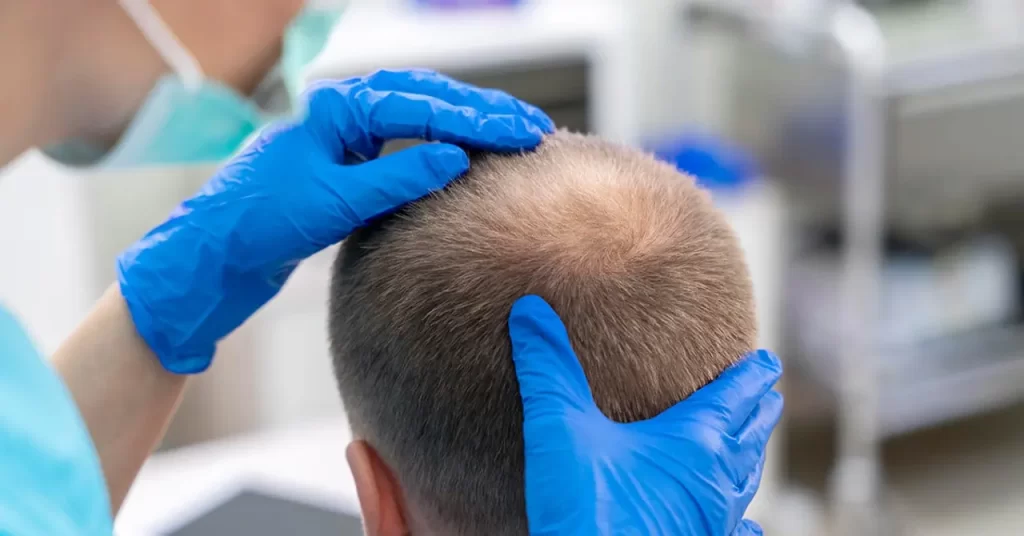Hair Transplant Myths and Facts: Debunking the Top 15 Misconceptions in 2025

- Introduction to Hair Transplants in 2025
- Myth: Hair Transplants Are Only for Men
- Myth: Hair Transplants Look Unnatural
- Myth: You Need to Shave Your Head
- Myth: Hair Transplants Are Painful
- Myth: Results Are Immediate
- Myth: Hair Transplants Are Permanent for Everyone
- Myth: Anyone Can Get a Hair Transplant
- Myth: Hair Transplants Are Only for Baldness
- Myth: Transplants Are High-Risk Procedures
- Myth: Turkey Is Unsafe for Hair Transplants
- Myth: Cheaper Means Poorer Quality
- Key Facts Every Patient Should Know
- How to Spot Reliable Information Online
- Frequently Asked Questions (FAQs)
- Final Thoughts and Expert Advice
Introduction to Hair Transplants in 2025
Hair transplants have come a long way, evolving from crude plug-like implants to sophisticated, minimally invasive procedures. As the demand grows, especially in destinations like Turkey, so do the myths and misunderstandings surrounding the treatment.
Misinformation often stems from outdated techniques, fear, or hearsay. This article is your go-to guide to separate fact from fiction and give you clarity before deciding on a hair transplant.
Myth: Hair Transplants Are Only for Men
Fact: Women also suffer from hair loss and increasingly turn to hair transplants for frontal hairline restoration, thinning crowns, and diffuse hair loss. Clinics now offer female-specific solutions, including non-shaven techniques.
Myth: Hair Transplants Look Unnatural
Fact: Today’s technology, especially FUE and DHI methods, ensures that transplanted hair blends seamlessly with existing strands. Skilled surgeons replicate natural hairline curvature, angle, and density, delivering an indistinguishable appearance.
Myth: You Need to Shave Your Head
Fact: While full shaving is common for men, women and certain male cases can undergo transplants with partial shaving or no shaving at all, thanks to the DHI technique. This allows for a more discreet procedure and faster return to daily life.
Myth: Hair Transplants Are Painful
Fact: The procedure is performed under local anaesthesia, and most patients report only mild discomfort. Recovery is swift, with only slight tenderness or swelling that resolves within days.
Myth: Results Are Immediate
Fact: Transplanted hair falls out in the first month due to the shedding phase. New growth begins around 3 to 4 months, with full results visible after 9 to 12 months. Patience is key.
Myth: Hair Transplants Are Permanent for Everyone
Fact: While transplanted hair is typically permanent, results depend on genetic factors, lifestyle, and scalp health. Additional treatments like PRP or maintenance medication (e.g., Minoxidil) may be needed for some.
Myth: Anyone Can Get a Hair Transplant
Fact: Not everyone qualifies. Patients need a stable donor area, no underlying scalp disease, and realistic expectations. A detailed consultation is crucial to determine suitability.
Myth: Hair Transplants Are Only for Baldness
Fact: Hair transplants are not just for complete baldness. Many patients seek them for:
Hairline refinement
Scar camouflage
Eyebrow and beard restoration
They’re also suitable for early-stage thinning or patchy hair.
Myth: Transplants Are High-Risk Procedures
Fact: In qualified clinics, hair transplants are low-risk outpatient procedures. Complications are rare when performed by experienced surgeons following strict hygiene protocols.
Myth: Turkey Is Unsafe for Hair Transplants
Fact: Turkey is a leading medical tourism destination with JCI-accredited clinics, multilingual staff, and thousands of international success stories. Reputable clinics uphold international medical standards.
Myth: Cheaper Means Poorer Quality
Fact: Turkey’s affordability is due to lower operational costs, not reduced quality. Patients receive top-tier care, experienced surgeons, and all-inclusive packages that combine luxury and medical care affordably.
Key Facts Every Patient Should Know
| Aspect | Detail |
|---|---|
| Recovery Time | 7–10 days for visible healing |
| Full Results | 9–12 months after surgery |
| Average Cost (UK) | £6,000–£9,000 |
| Cost in Turkey | £1,500–£3,000 (all-inclusive) |
| Success Rate | 90–95% with modern techniques |
How to Spot Reliable Information Online
Before believing what you read online, ensure:
The source is a registered clinic or certified doctor
The site shows before and after photos
Reviews are verified via platforms like Trustpilot
Information is recent and not based on outdated techniques
Avoid forums or blogs without professional oversight.
Frequently Asked Questions (FAQs)
1. Are hair transplants only for older people?
No, suitable candidates can be as young as 25, provided they have stable hair loss and a healthy donor area.
2. Will everyone know I’ve had a transplant?
Not at all! With DHI and partial shaving, results can be very discreet.
3. Can a transplant fail?
Failures are rare when done by experienced professionals, but poor aftercare or unrealistic expectations can impact outcomes.
4. How long do I need to stay in Turkey?
Most patients stay for 2–3 days, including consultation, procedure, and a check-up.
5. Will the transplanted hair require special products?
No special care is needed long-term—just regular shampooing and healthy scalp hygiene.
6. Can I colour or style my new hair?
Yes! After the initial healing period (about 3–4 months), you can treat it like your natural hair.
Final Thoughts and Expert Advice
Understanding the facts about hair transplants empowers you to make a confident, informed decision. Don’t let myths hold you back from exploring an option that could transform your confidence and appearance. In 2024, hair restoration is not only accessible but also safer, more natural, and more affordable than ever before.
Always consult a reputable clinic, ask for real patient examples, and ensure you're receiving evidence-based advice before making your choice.
If you want to know other articles similar toHair Transplant Myths and Facts: Debunking the Top 15 Misconceptions in 2025 you can visit the category Blog.
